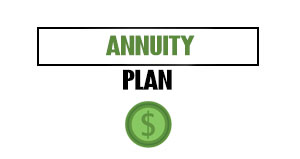The latest report on average refinancing rates for various home loan types was published, providing homeowners with updated information on current market conditions. The report offers a snapshot of interest rates across different mortgage categories, helping consumers make informed decisions about potential refinancing opportunities.
The data comes as mortgage rates continue to fluctuate in response to broader economic factors, including Federal Reserve policies, inflation metrics, and overall market sentiment. Homeowners considering refinancing their existing mortgages can use this information to evaluate potential savings and determine whether now is an appropriate time to refinance.
Breaking Down the Rate Environment
The report details refinancing rates for several common mortgage types, including 30-year fixed-rate mortgages, 15-year fixed-rate mortgages, and adjustable-rate mortgages (ARMs). These figures represent national averages, though actual rates available to individual borrowers may vary based on credit score, loan-to-value ratio, and other factors.
Financial analysts note that understanding the differences between these loan types remains crucial for homeowners weighing refinancing options. While 30-year fixed-rate mortgages typically offer lower monthly payments, 15-year loans often provide substantial interest savings over the life of the loan. ARMs may offer initially lower rates but carry the risk of future rate adjustments.
Market Context and Borrower Implications
The refinancing landscape exists within a complex housing market that has seen significant changes over the past several years. After record-low interest rates in 2020-2021 triggered a refinancing boom, subsequent rate increases have dramatically reduced the pool of homeowners eligible for refinancing.
Housing economist Michael Chen explains: “Today’s refinance market is much more selective. Homeowners need to carefully analyze their specific situation rather than simply assuming refinancing will save them money.”
Key considerations for potential refinancers include:
- The size of the rate difference between current and new loans
- How long the homeowner plans to stay in the property
- Closing costs associated with refinancing
- Whether cash-out options align with financial goals
Regional Variations and Lender Differences
While the report provides national averages, mortgage professionals emphasize that rates can vary significantly by region and lender. Borrowers in competitive markets may find more favorable terms as lenders vie for business, while those in less active markets might face higher rates.
“Shopping around remains one of the most effective strategies for finding the best refinance rate,” says mortgage broker Sarah Johnson. “We regularly see rate differences of a quarter to half a percentage point between lenders for the same borrower profile.”
The report also tracks how different loan characteristics affect refinancing rates. Factors such as loan amount, property type, and down payment percentage can all influence the final rate offered to borrowers.
As the housing market continues to adjust to changing economic conditions, these regular rate reports provide valuable data points for homeowners considering their financial options. Financial advisors recommend that homeowners review such reports as part of a broader assessment of their mortgage situation and long-term housing plans.















